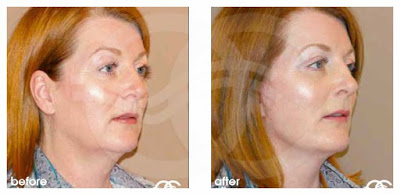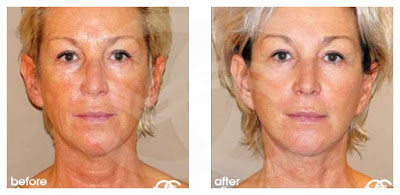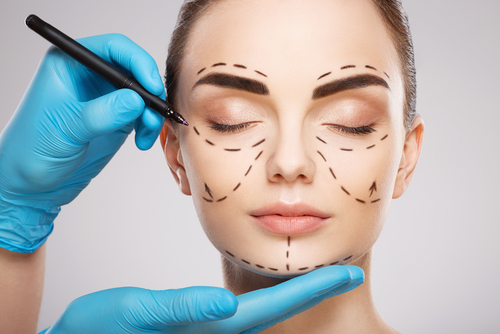Facelift surgery is often associated with men and women in their sixties, but this is mostly because patients at this age show the most dramatic transformation.
The truth is, people much younger than this are having facelift surgery - it’s just the results are more subtle. Do you know someone who never seems to grow older? This could be why! There are actually benefits to having surgery sooner rather than later when it comes to preserving youthful looks. But how young is too young for a facelift?
What’s the best age for a facelift?
Every one of us is different, so the best age for one person might not be the best age for another. At Ocean Clinic, rather than state you must be a certain age, we’ll look at the signs of ageing your face is showing. Here’s what we will look for:
- Loss of volume - as we age, facial fat diminishes. This leads to the bones of the face become more visible. Hollows appear at the temples, cheeks and around the eyes. At the same time, fat succumbs to the effects of gravity, migrating downwards. This can create a heavy brow and hooded eyelids, as well as folds around the mouth and jowls at the jawline.
- Skin quality - skin that is losing elasticity will begin to wrinkle and sag. Permanent lines appear around the eyes and mouth and on the forehead. Eyelids may take on a crepey appearance, and the skin under the eyes may appear more transparent as it thins. Where the skin has become looser, it starts to collect under the chin and on the neck. A good way to check the condition of your skin is to pinch it and see how quickly it pings back.
- Muscles - muscles also weaken with age. The levator muscles, which are responsible for the opening and closing of the eyelids, can become stretched and this leads to drooping eyelids. On the neck, the platysma muscle can start to enlarge and protrude, resulting in the appearance of thick, tight cords. This is known as ‘banding’.
When these natural effects of ageing start to occur they can have a big impact on the expression of your face. You might look tired, stressed or even angry and this might not be at all reflective of how you really feel. It can be upsetting to look in the mirror and see someone you don’t fully recognise as yourself looking back.
If you’ve started to notice changes in your face, then it might be an appropriate time for surgery. There is no magic number. In some individuals, volume loss in the face can start to be seen during their thirties, while others will have good volume into their late fifties. Genetics play a big role in the way we age, as well as lifestyle factors. If you smoke, drink excessively, eat a poor diet or your weight fluctuates significantly, your skin will suffer and you may look older than your chronological years.
Ultimately, the best age for a facelift is when the signs of ageing described above start to appear and your surgeon agrees they are advanced enough to warrant surgery. In general, this won’t be before the age of 35, but it could be in your forties.

Why your forties can be a good time for a facelift
Many women who begin to notice the signs of ageing in their late thirties turn to Injectables and fillers. Once you start with injectables, you’re on a road you can never get off. These treatments must be repeated every 3-12 months and the costs quickly clock up. A facelift, on the other hand, provides a long-term solution at a one-off cost.
What’s more, a facelift surgically fixes the problems rather than simply patching them up. The results are superior and will take more years off your appearance. US surgeon Dr. Jacono carried out a study of women who had previously used injectables and then had facelifts. The study found that while the women looked four years younger after non-invasive treatments, they looked almost 10 years younger after their facelift surgery.
Often, patients in their forties don’t require a full facelift. This is because there is less excess skin and the tissues have not fallen as much. You may only require a mini-facelift, which is less invasive, requiring a smaller incision, hidden behind the ear. A mini facelift focuses on lifting the wrinkles and sagging skin in the lower part of the face, as well as neck drooping.
Because the skin, tissue and even the bones (the scaffolding of the face) of younger people are better quality, facelifts performed earlier look more natural. This means that a few nips and tucks can totally restore your appearance. Think of it like restoring a car; it’s easier to mend a few dents and scratches then it is to treat advanced rust.
Another big benefit to undergoing surgery when you’re younger rather than older is that your body is much more resilient. You are better able to tolerate the anesthesia and there is a lower likelihood of complications. Younger people also heal better and faster.

Will I need another facelift in my fifties?
Facelifts (sadly) can’t stop time. They can rewind the clock and make you look younger but you will, of course, continue to age. With that said, when you have a facelift at a younger age, the results last longer. A facelift in the forties will last twice as long as one performed on a patient in his or her sixties.
This means the benefits of your surgery will last you for a long time. Although you will age, you will always look younger than you would have otherwise. Additionally, any revision work you might want will be smaller and less invasive. Having small touch-ups as you go through the decades is usually preferable to a big surgery later in life. This approach will preserve and maintain your appearance, making sure you always look good; through your forties, fifties, sixties and beyond.
Want to know what the best anti-ageing options are for you? Ocean Clinic can tailor treatments to your unique requirements. Call or send us a message to book a consultation.
